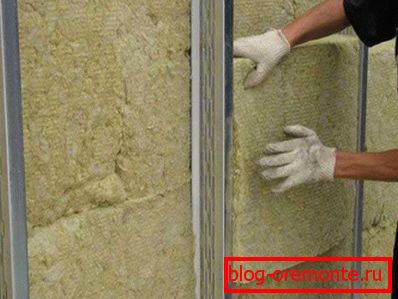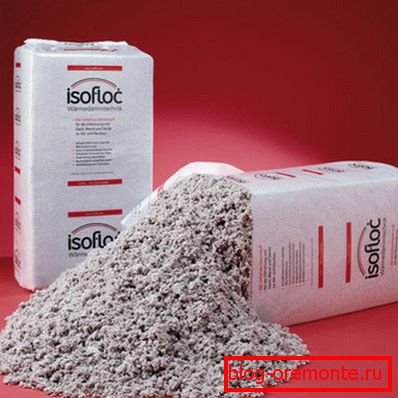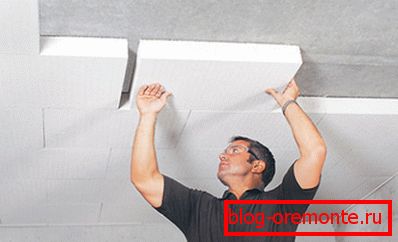Warming of concrete. necessary materials. we warm from the
Concrete is one of the most popular building materials, as it is characterized by high strength, durability, and also has many other advantages. However, like any other material, it has some drawbacks, which include high thermal conductivity. Therefore, to make a concrete structure warm, it is necessary to warm it.

Next, we look at the most effective modern technology of concrete insulation.
Wall insulation
How to insulate concrete walls
As a rule, when faced with concrete weatherization, novice craftsmen wonder how to make insulation from the outside or from the inside. It would seem that it is easier to perform insulation from the inside, but experts recommend installing insulation outside.
The fact is that the walls covered with the heat insulator from the inside will be fenced off from the heat source. As a result, they can freeze so much in winter that the dew point will be between the insulation layer and the wall. As a result, condensation and dampness will appear under the insulation.
Note! Internal insulation often causes fungi and mold on the walls.
You can avoid all these troubles in the case of external insulation.

The technology of wall insulation outside
There are quite a few varieties of thermal insulation materials that can be used to insulate concrete walls. But foam polystyrene is most popular. In addition, mineral mats are often used to insulate concrete.
Installation instructions for these materials are as follows:
- First of all, it is necessary to prepare the surface of the walls - remove the old plaster, as well as dismantle the elements that will interfere with further work - plums, awnings, etc.
- Next, the foam polystyrene mats or panels are glued with a special adhesive.
- Then additionally secured with special doubles, which are called "umbrellas" or "fungi". To do this, the wall is drilled with a perforator right through the insulation. Dowels are hammered so that their caps are slightly warmed to the surface of the insulation.
- After that, a glass fiber reinforcing mesh is glued over the insulation.. To do this, a thin layer of glue is applied to the wall and the mesh is embedded in it with a spatula.
- After the glue dries, another layer is applied on top of the net about 3 mm thick.
- The final stage of finishing is the application of decorative plaster and painting.
It must be said that according to this technology, we can insulate aerated concrete, as well as any other building material.
Another common option is insulation foam. In this case, use panels that are glued to the walls, or blocks. In the second case, facing masonry is built. Therefore, this technology is suitable for private homes.

Wall insulation from the inside
Wall insulation from the inside is performed using the same technology. The only thing in this case is still necessary to use hydro and vapor barrier. In addition, lathing is carried out, to which finishing materials, for example, drywall or plywood sheets, are subsequently attached.
Tip! Before embarking on wall insulation from the inside, it is necessary to conduct communications. For this, it may be necessary to drill diamond holes in concrete. Also, channels should be laid for laying cables, in some cases it may even be necessary to cut reinforced concrete with diamond circles.

Floor insulation
Thermal insulation of reinforced concrete ceiling is an important point of thermal insulation of the room, since heat loss through it can be up to 15 percent. This procedure can also be performed both internally and externally. Therefore, we consider both technologies.
Materials
For insulation of the ceiling, you can use different materials:
| Керемзит | It is a building refractory material based on foamed baked clay, made in the form of granules. It has good heat and sound insulation properties, does not contain in its composition of harmful substances, therefore, is an environmentally friendly insulation. |
| Styrofoam | The polymeric material possessing low heat conductivity. In addition to good performance attracts the fact that it is low price. |
| Ecowool | Loose cellulose insulation that is completely harmless to humans. |
| Mineral wool | It has excellent thermal insulation properties. As a rule, it is used at the construction stage or when performing a capital repair. |

Ceiling insulation technology outside
The easiest way to insulate non-residential attic. In this case, the insulation is placed on the floor of the attic. It is much easier to do this than to warm the concrete ceiling from the inside.
As a rule, this procedure is performed as follows:
- First of all, the floor of the attic is covered with vapor barrier material.
- Then lay a layer of crumpled clay.
- A layer of expanded clay about 15 cm thick is poured on top of the clay.
- After that the heater is sewn up with boards.

If it is necessary to insulate a flat concrete roof, then this operation is performed when the screed is cast.
The procedure is performed in this order:
- The overlap is covered with a vapor barrier.
- Then the cement mortar is added with the addition of "Betolite". This material is similar to foam chips.
- After hardening of concrete, the screed is covered with roofing felt.
Tip! To achieve the best effect, insulation of the concrete roof from the outside can be performed using extruded polystyrene foam, which fits under the screed. In addition, the overlap can be covered with a layer of expanded clay with a thickness of 15 cm and a screed on top.

Warming from the inside
In apartments, the ceiling is usually insulated from the inside. To do this, the profile is attached to the ceiling, to which the insulation is then fixed. Next, the waterproofing layer is fixed with parchment, after which the heat-insulating plates are mounted. Next to the ceiling should be attached with their own hands drywall, plastic panels or other materials.
I must say that you can also use the technology of pasting the surface of the foam described above. In this case, the finishing finish is usually done with decorative plaster or wallpapering.
Conclusion
Thermal insulation of concrete buildings is an easy task. The only thing is that this procedure requires precise adherence to technology in order to avoid the problem of high humidity in the room and the occurrence of mold.
As a rule, each material has its own installation technology. From the video in this article, you can get more information on this topic.